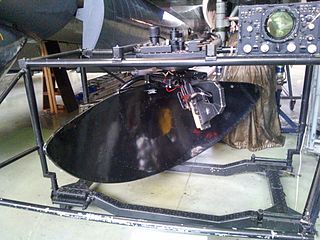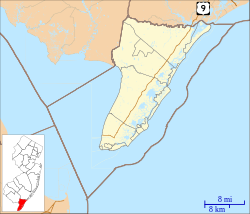
Sea Control Squadron 21 (VS-21) was an aviation unit of the United States Navy. It served from 1945 to 2005 and was mainly tasked with anti-submarine warfare while operating from aircraft carriers. It was the only squadron to receive the designations VA-1E, VC-21, or VS-21.

The Grumman TBF Avenger is an American World War II-era torpedo bomber developed initially for the United States Navy and Marine Corps, and eventually used by several air and naval aviation services around the world.

Flight 19 was the designation of a group of five General Motors TBM Avenger torpedo bombers that disappeared over the Bermuda Triangle on December 5, 1945, after losing contact during a United States Navy overwater navigation training flight from Naval Air Station Fort Lauderdale, Florida. All 14 naval aviators on the flight were lost, as were all 13 crew members of a Martin PBM Mariner flying boat that subsequently launched from Naval Air Station Banana River to search for Flight 19.

Carrier onboard delivery (COD) is the use of aircraft to ferry personnel, mail, supplies, and high-priority cargo, such as replacement parts, from shore bases to an aircraft carrier at sea. Several types of aircraft, including helicopters, have been used by navies in the COD role. The Grumman C-2 Greyhound has been the United States Navy's primary COD aircraft since the mid-1960s.

Gillespie Field is a county-owned public towered airport 11.5 miles northeast of downtown San Diego, in El Cajon, San Diego County, California, United States.

The Link Trainer Building is an historic structure in Fort Lauderdale, Florida. On May 20, 1998, it was added to the U.S. National Register of Historic Places.

West Trenton is an unincorporated community within Ewing Township in Mercer County, New Jersey, United States. It is a suburban area located adjacent to the northwestern portion of the city of Trenton, from which it derives its name. Located at the intersection of Bear Tavern Road/Grand Avenue and West Upper Ferry Road, it is one of the oldest settlements in Ewing Township.

List of the National Register of Historic Places listings in Cape May County, New Jersey.

The Brandywine Shoal Light is a lighthouse on the north side of the ship channel in Delaware Bay on the east coast of the United States, west of Cape May, Cape May County, New Jersey, United States. It was the site of the first screw-pile lighthouse in the United States.

The High Velocity Aircraft Rocket, or HVAR, also known by the nickname Holy Moses, was an American unguided rocket developed during World War II to attack targets on the ground from aircraft. It saw extensive use during both World War II and the Korean War.

The Naval Air Station Wildwood Aviation Museum is an aviation museum located at the Cape May Airport in Lower Township, in Cape May County, New Jersey, United States.

CAF Rocky Mountain Wing (RMW) Museum is one of 75 local detachments of the national Commemorative Air Force (CAF) non-profit aviation association dedicated to Honoring American Military Aviation through Flight, Exhibit and Remembrance.

Naval Air Station Wildwood was a United States Navy airport located in Lower Township, Cape May County, New Jersey, United States, about 4 miles (6.4 km) northwest of the central business district of Wildwood, a city in the same county. Former Hangar #1 now contains the Naval Air Station Wildwood Aviation Museum, whose collection focuses on World War II.
Attack Squadron ONE L (VA-1L) was a United States Navy squadron used to evaluate weapons and equipment and develop new tactics for the fleet under command of Light Carrier Air Group One (CVLG-1) aboard the USS Saipan (CVL-48). Originally established as Torpedo Squadron FIFTY EIGHT (VT-58) on 19 March 1946 at Naval Auxiliary Air Station Fentress in Chesapeake, Virginia, it was redesignated VA-1L on 15 November 1946 and ultimately disestablished on 20 November 1948. The squadron was the only one to receive the designations VA-1L or VT-58.

Attack Squadron 15 (VA-15), nicknamed the Valions, was an aviation unit of the United States Navy. It was established as Torpedo Squadron 4 (VT-4) on 10 January 1942, redesignated VA-2A on 15 November 1946, and finally redesignated VA-15 on 2 August 1948. The squadron was disestablished on 1 June 1969, after 27 years of service.

The Battle of Leyte Gulf, generally considered to be the largest naval combat in history, was fought 24–25 October 1944 in the waters of the Philippine Islands by elements of the Imperial Japanese Navy's Combined Fleet and the United States Navy's Pacific Fleet. Of the five separate engagements that made up the battle as a whole, the forces involved in the three principal ones are listed here.

For the April 1945 invasion of Okinawa, the Allies assembled the most powerful naval force in history. Since the few remaining capital ships of the Imperial Japanese Combined Fleet had been sunk or otherwise put out of action at the Battle of Leyte Gulf, the Allies were effectively unopposed in terms of major surface vessels; a single mission consisting of the superbattleship Yamato and a few escorts was undertaken, but the task force did not get within 200 nautical miles of the invasion area. The main Japanese naval opposition within the invasion area came from hundreds of Imperial Japanese Navy Shin'yō-class suicide motorboats and Maru-Ni Imperial Japanese Army attack boats.

On 17 October 1944, troops of the United States Sixth Army under the direct command of Lieutenant General Walter Krueger, invaded the Philippine island of Leyte. This operation was the beginning of General Douglas MacArthur's fulfillment of his promise in March 1942 to the Filipino people that he would liberate them from Japanese rule.

The AN/APS-20 was an airborne early warning, anti-submarine, maritime surveillance and weather radar developed in the United States in the 1940s. Entering service in 1945, it served for nearly half a century, finally being retired in 1991. Initially developed at Massachusetts Institute of Technology (MIT) under Project Cadillac, the radar was developed to be carried by aircraft to extend the sensor range of ships by placing a radar at altitude. Although developed for carrier-borne operation, first being installed in the single-engined General Motors TBM-3W Avenger, it was also used in larger four-engined airframes, the last being a fleet of Avro Shackleton AEW.2 which were converted from maritime patrol aircraft. Similarly, although developed for detecting aircraft, it saw extensive service in anti-submarine and maritime patrol roles and was one of the first radars to be used in researching extreme weather like hurricanes by agencies like the Environmental Science Services Administration (ESSA). As well as the United States, the radar was used by a large number of services in other countries, including the French Navy, Japan Maritime Self-Defense Force (JMSDF), Royal Air Force (RAF) and Royal Canadian Air Force (RCAF). Early versions of the radar could see a low-flying aircraft at 65 nautical miles and a ship at 200 nautical miles. This was improved, so that later versions had a range against aerial targets of 115 nautical miles.





















